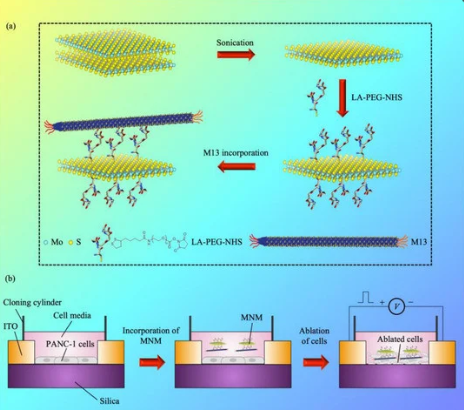💡 This paper explores an innovative approach to antibiotic development, focusing on the creation of recombinant multidomain proteins with antimicrobial properties.
📍 The study aimed to develop and test the efficacy of two generations of Host Defense Peptide-based proteins against specific bacterial strains.
📌 In this study, genetic constructs of proteins from 1st and 2nd generations were codon-optimized for 𝘌. 𝘤𝘰𝘭𝘪 and subsequently cloned into pET22b. The study used human peripheral blood cells to test protein toxicity, electron microscopy to observe antimicrobial effects, and dynamic light scattering for volume size distribution.
The study extensively evaluated the proteins’ antimicrobial activity through antimicrobial screening, Minimal Inhibitory Concentration analyses, and biofilm eradication.
📍 Findings of this paper:
📌 The 1st and 2nd generation antimicrobial proteins were successfully produced with reduced host toxicity.
📌 The study found that second-generation proteins, notably D5L37D5L37 and D5L37βD3, showed varied size distribution and significant antimicrobial activity against multiple bacterial strains such as 𝘔𝘦𝘵𝘩𝘪𝘤𝘪𝘭𝘭𝘪𝘯-𝘴𝘦𝘯𝘴𝘪𝘵𝘪𝘷𝘦 𝘚𝘵𝘢𝘱𝘩𝘺𝘭𝘰𝘤𝘰𝘤𝘤𝘶𝘴 𝘢𝘶𝘳𝘦𝘶𝘴, 𝘔𝘦𝘵𝘩𝘪𝘤𝘪𝘭𝘭𝘪𝘯-𝘳𝘦𝘴𝘪𝘴𝘵𝘢𝘯𝘵 𝘚𝘵𝘢𝘱𝘩𝘺𝘭𝘰𝘤𝘰𝘤𝘤𝘶𝘴 𝘦𝘱𝘪𝘥𝘦𝘳𝘮𝘪𝘥𝘪𝘴, 𝘢𝘯𝘥 𝘗𝘴𝘦𝘶𝘥𝘰𝘮𝘰𝘯𝘢𝘴 𝘢𝘦𝘳𝘶𝘨𝘪𝘯𝘰𝘴𝘢.
📌 The D5L37D5L37 construct also showed no evidence of toxicity on peripheral blood mononuclear cells.
📌 The biofilm eradication capability of the proteins proved to be effective, potentially providing a strategy to combat biofilm-associated infections.
📌 The study highlights that protein folding in each domain significantly impacts the final antimicrobial activity, suggesting the critical role of protein composition in determining their functionality.
📌 The D5L37D5L37 resulted in a 5-log reduction in bacterial strain MSSA, proving more effective than the first-generation proteins.
📌 This study provides valuable insights into the potential benefits of HDP-based proteins in antimicrobial therapy. The promising results from tests against 𝘔𝘙𝘚𝘈 𝘢𝘯𝘥 𝘗. 𝘢𝘦𝘳𝘶𝘨𝘪𝘯𝘰𝘴𝘢 suggest that this approach could address the challenge of antibiotic resistance.
📍 These findings align well with antibiotic stewardship programs by offering an innovative antibacterial solution to combat antibiotic resistance. The implementation of HDP-based proteins could represent a new therapeutic strategy, able to deal with multidrug-resistant strains when conventional antibiotics fail.
This approach promotes the responsible use of antibiotics by providing alternative therapeutic options. Furthermore, recombinant multidomain proteins could potentially reduce the overuse, misuse, and thus the subsequent resistance to current #antibiotics, all of which are core goals of #antibioticstewardship programs.
Link to the article : https://tinyurl.com/4sst8e5e
